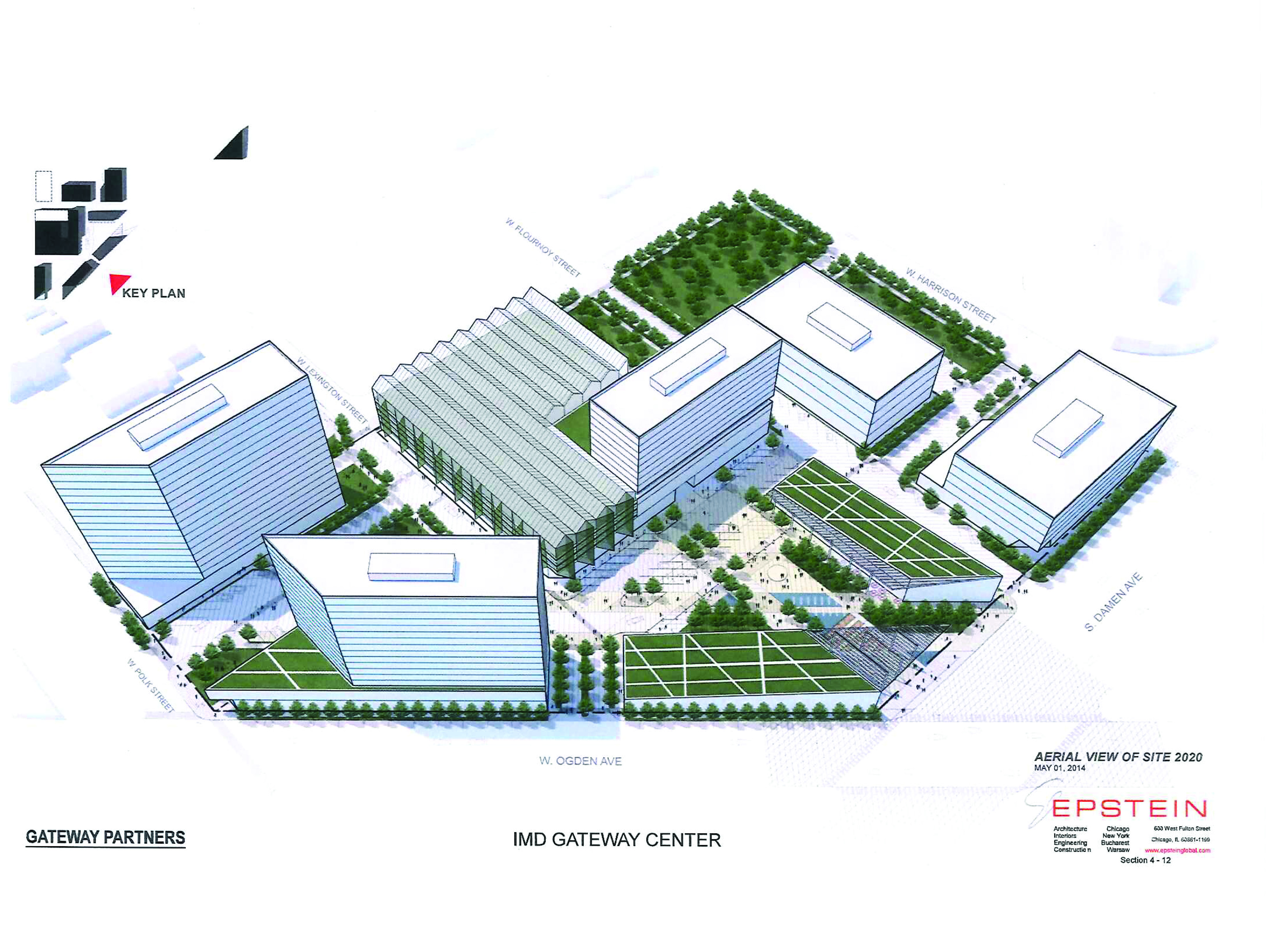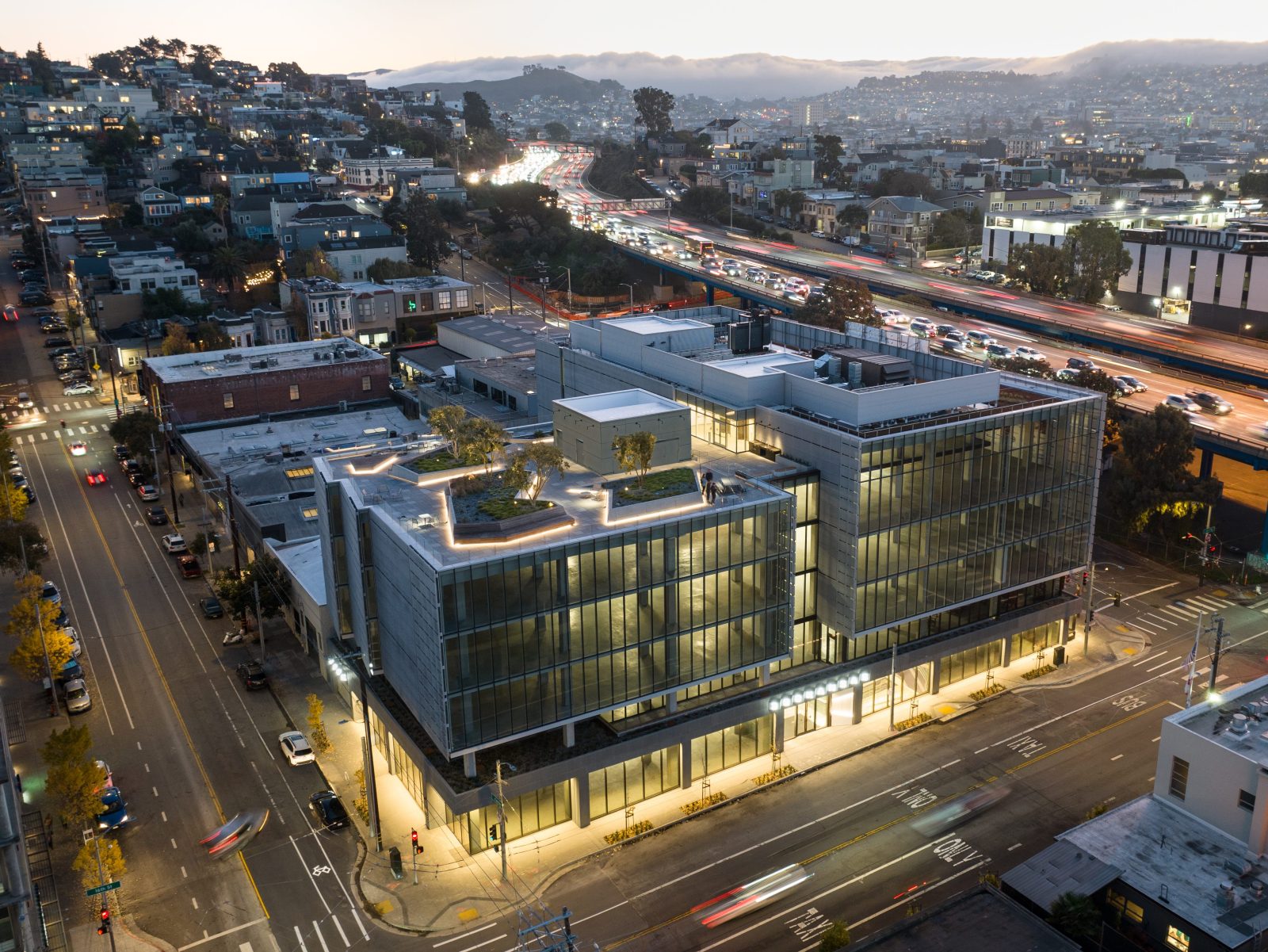Illinois Medical District’s $300M Gateway Center Moves Forward
After an earlier proposal was withdrawn last year by its developer, a beefed-up 1.2 million-square-foot mixed-use project in the Illinois Medical District on Chicago’s West Side has been approved by the district’s coordinating body.
By Scott Baltic, Contributing Editor
 After an earlier proposal was withdrawn last year by its developer, a beefed-up 1.16 million-square-foot, $300 million mixed-use project in the Illinois Medical District on Chicago’s West Side has been approved by the district’s coordinating body, the Illinois Medical District Commission, that group announced last week.
After an earlier proposal was withdrawn last year by its developer, a beefed-up 1.16 million-square-foot, $300 million mixed-use project in the Illinois Medical District on Chicago’s West Side has been approved by the district’s coordinating body, the Illinois Medical District Commission, that group announced last week.
A local expert, however, questions whether the demand necessarily exists to put the project, called IMD Gateway Center, to full use.
The lead developer is Gateway Development Partners L.L.C., composed of Higgins Development Partners, Thomas Samuels Enterprises, East Lake Management & Development Corp. and Isiah Real Estate L.L.C., which is headed by former NBA star (and West Side native) Isiah Thomas.
These four plan to provide 10 percent of the capital for the project, while Chicago’s Harrison Street Capital L.L.C. will provide the other 90 percent, according to Crain’s Chicago Business.
(Late last year, Higgins Development had proposed a somewhat smaller $162 million project, but Principal Jack Higgins almost immediately withdrew the proposal, reportedly because he and his wife owed the IRS $2.53 million in back federal taxes.)
Gateway Center will sit on a 9.5-acre site, now home mostly to surface parking lots. Current plans for the $300 million project are to include a 10-story, 225-room hotel; a 16-story, 200-unit apartment building; a second apartment building, of 224,000 square feet; 92,000 square feet of retail space; an 88,000-square-foot medical office building; 100,000 square feet of lab space; and a five-story parking structure.
The latter, with capacity for 500 to 700 cars, will also feature an urban farm/greenhouse on top, Eric Feinberg, a corporate managing director of Savills Studley, which is working for the IMDC, told Commercial Property Executive.
The first-mentioned apartment building will be studios and one-bedrooms for students and young professionals, while the second will be larger apartments intended as market-based housing for community residents, Feinberg added.
The retail will likely include a pharmacy, supermarket and at least one restaurant, he said, adding that IMD stakeholders have emphasized that they want the retail, apartments and hotel.
Ground is expected to be broken within about 12 months. Feinberg also noted that two additional parcels that remain unspoken for at this time will give the development team some flexibility in the future.
The site will be subject to a 75-year ground lease that will eventually provide the IMDC with more than $1 million in annual lease revenue.
The IMD covers 560 acres on the city’s Near West Side, and its four hospitals, two universities (Rush University and the west campus of the University of Illinois at Chicago), technology park and other organizations employ more than 29,000 people, according to an October 2013 report from the Center for Urban Economic Development at the University of Illinois at Chicago.
Regarding an earlier proposed project similar to Gateway Center, the CUED report commented, “If the hospitals in the IMD change their mix of services and/or marketing efforts to attract more patients from outside the region, this facility could increase their ability to serve those patients by providing more accommodations for out-of-town patients’ families. It could also help attract business, medical, and research visitors to the IMD if the IMD’s businesses, hospitals, and universities become more export-oriented.”
Those “ifs” are key, Howard Wial, CUED’s executive director and the report’s coauthor, told CPE. He emphasized that although the occupancies called for at Gateway Center are complementary to the IMD’s existing ones and might help attract visitors, the IMD, the universities and the other entities there must do more to create demand.







You must be logged in to post a comment.